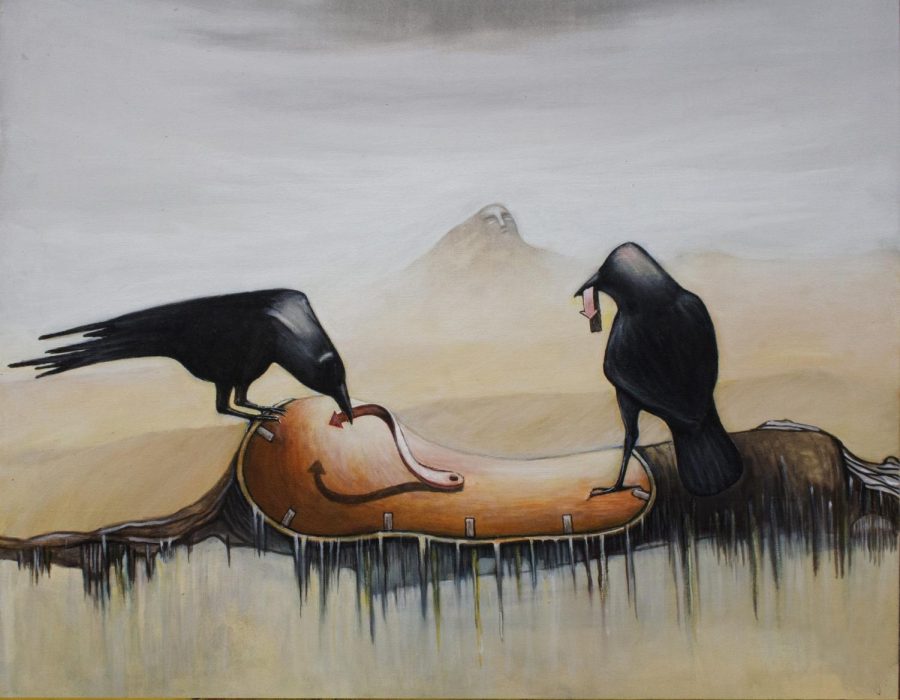Unpopular Opinion: Surrealist art is underrated
December 2, 2022
In my senior year of high school, I was granted the opportunity to take an AP Art History class, an experience I remain incredibly grateful for. The course covered art ranging from pottery carefully crafted by human hands thousands of years old to symbolic robot installations of the 2010s, but of the pieces which most fascinated me, most were from the Surrealist Movement.
Surrealist art stood out to me for its element of strangeness and fantasy mixed with recognizable images and symbols, a combination both realist and abstract art tend to lack.
As it is most generally defined, according to the British art institution Tate, the Surrealist Art Movement first began in the 1920s, following World War I, and strove to develop themes of the subconscious. Surrealist pieces often appear almost riddle or dream-like, as they are usually created with the goal of forcing their viewer to think, think hard, and more likely than not, apply their own imagination before moving on.
As a result, surrealist art is often criticized for being confusing, chaotic, and even unnerving. Humanity has a long history, after all, of fearing that which it doesn’t understand.
Salvador Dali’s painting “The Persistence of Memory” remains one of the most famous works of art of the Surrealist Movement. The piece seems to capture the aura of a dream, with its lazy atmosphere, melting clocks and confusing backdrop.
It’s easy to be put-off by the scene, whether your unease originates from the barren landscape or humanistic and apparently clay-like figure draped on the painting’s ground. For fans of surrealism, though, the sense of mystical eeriness the painting incites is precisely what makes it so intriguing.
Beyond the exciting and chilling emotions they foster in us, surrealist art must also be revered for its ability to convey powerful political and cultural messages, an important characteristic for any historical or contemporary art movement to have.
One of the most iconic surrealist artists recognized today is Frida Kahlo, who often slipped emotional and personal messages, as well as her own face, into her work.
Her painting, “The Two Fridas” for instance, is unmistakably surreal, portraying two Kahlo’s linked not only by their joined hands, but by dripping, red veins connecting back to exposed hearts as well.
The clothing of the two Fridas, however, reveals a deeper personal and cultural meaning. One figure is dressed in traditional women’s fashion of Europe and the other in traditional women’s fashion of Mexico, where Kahlo was born. While the heart of the latter is healthy and full, the heart of the former’s is torn and slowly bleeding onto her gown.
As a college student, confusion – especially in the week preceding finals – is generally, and understandably, an unwelcome emotion. However, it is important to keep in mind that, as the Surrealist Movement proves, confusion does not have to be exclusively viewed as bad.
Perhaps by pausing just a moment longer to consider a hidden perspective, we invite ourselves into a fuller and more enchanting world.







